|
|
|
Green Honeycreeper / Mielero verde (Chlorophanes spiza) |
QUICK TIPS:
1) Consider overall plumage - males are turquoise with a partial black hood, while females are uniformly lime-green; juveniles are similar to females but more grayish.
2) Look at the primary coverts - on AHY/ASY birds they are broad with distinct turquoise (male) or green (female) edging, while on HY/SY birds they are more brownish, with edging narrower and more restricted to the tip of the feathers.
3) Check the iris - it is brick-red on adults, and reddish-brown on juveniles, but it is unclear at what age the colour typically changes.
|
Species account updated March 2009
|
Ageing and sexing overview:
|
Spring: |
ASY - M
Turquoise body and black hood; broad and dark primary coverts with distinct turquoise edging |
|
|
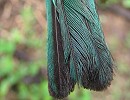
|
ASY - F
Uniformly lime-green plumage; broad and dark primary coverts with distinct green edging |
|
|
|
SY - M
|
|
|
|
SY - F
Uniformly lime-green plumage; brownish primary coverts with minimal green edging |
|
|
|
|
Ageing and sexing details:
|
SPRING: ASY-M (after-second-year male) |
ASY male Green Honeycreepers are a stunning turquoise and black, with a striking yellow and black bill.
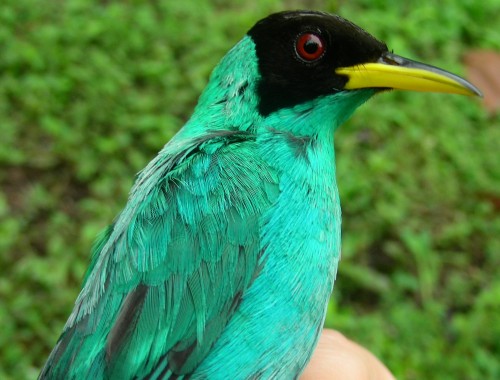
Photo by Marcel Gahbauer, Las Caletas (CR),
April 2008
The flight feathers appear uniform in quality and wear, with broad and rounded primary coverts that have distinct turquoise edging.
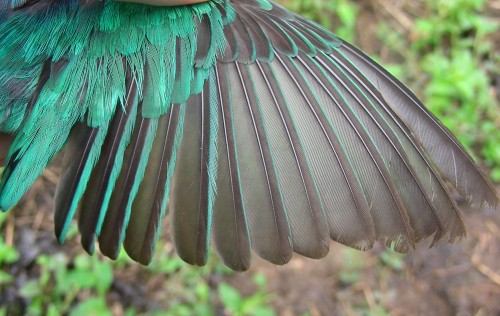
Photo by Marcel Gahbauer, Las Caletas (CR),
April 2008
Tail shape and condition appears to vary relatively little by age among honeycreepers.
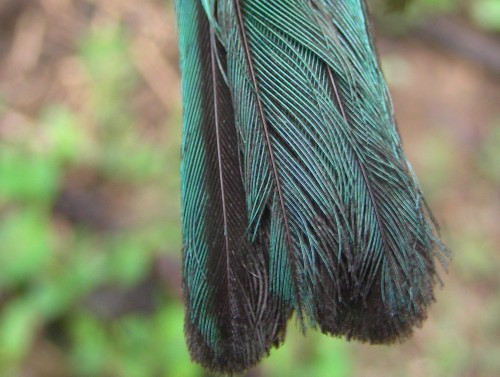
Photo by Marcel Gahbauer, Las Caletas (CR),
April 2008
RETURN TO AGE/SEX
OVERVIEW
SPRING: ASY-F (after-second-year female) |
This female was banded in spring 2005, and therefore was at least 3+ years old when recaptured and photographed in April 2008. Note the uniform lime-green plumage; open wings usually need to be seen to determine age for this species.
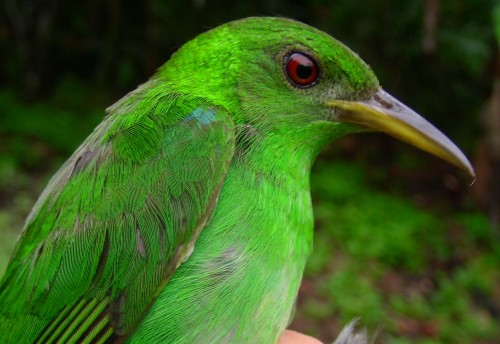
Photo by Marcel Gahbauer, Las Caletas (CR),
April 2008
All wing feathers are broad and rounded, with distinct edging. Of particular interest is that the innermost two primary coverts (and corresponding primaries) have turquoise edging, rather then green. Typically only males have turquoise feathers, but given the known age of this individual, it must almost certainly be a female; the explanation for these feathers is unknown.
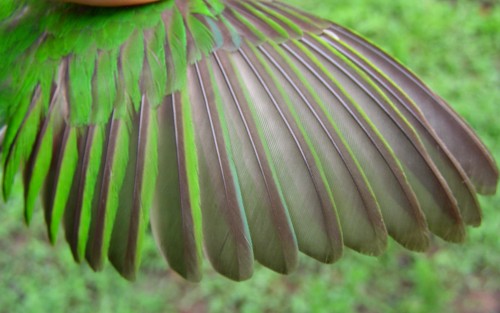
Photo by Marcel Gahbauer, Las Caletas (CR),
April 2008
Based on this individual being at least 3+ years old, this tail can be taken as typical of ASY Green Honeycreepers; note that even the adult rectrices seem to have a rather loose structure (especially the central rectrices).
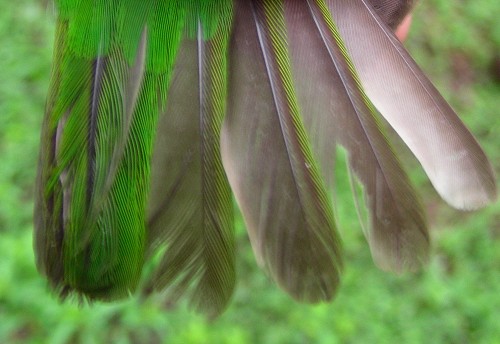
Photo by Marcel Gahbauer, Las Caletas (CR),
April 2008
RETURN TO AGE/SEX
OVERVIEW
|
SPRING: SY-F (second-year female) |
The overall plumage of this bird appears very similar to that of an ASY female; the age in this case is presumed based on the appearance of the wing, but it is possible this bird is older than SY, as timing and extent of moult in this species has not been well documented.
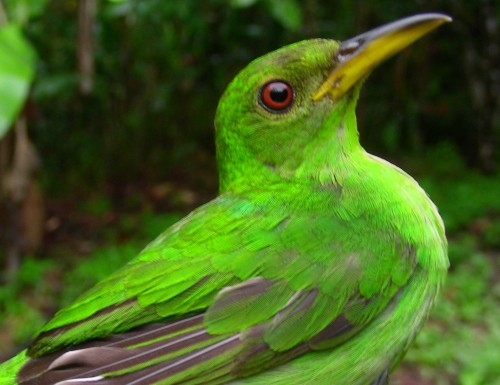
Photo by Marcel Gahbauer, Las Caletas (CR),
April 2008
Note the relatively brownish, narrow, and pointed primary coverts with minimal green edging, contrasting with the greater coverts (compare with the ASY female above). It appears there is also a moult limit between the unreplaced juvenile inner primaries that are brownish and frayed, and the new adult outer primaries that are darker and with bolder green edging.
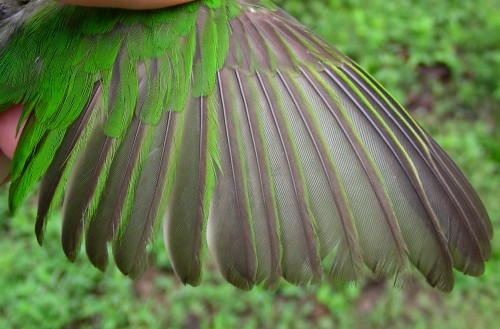
Photo by Marcel Gahbauer, Las Caletas (CR),
April 2008
The shape and quality of the tail below is similar to that of the known ASY female above, suggesting that either there is minimal difference in appearance of rectrices by age in this species, or that the tail is (at least sometimes) fully replaced as part of a preformative moult in fall or winter.
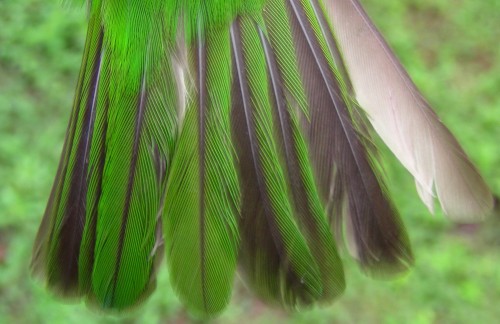
Photo by Marcel Gahbauer, Las Caletas (CR),
April 2008
RETURN TO AGE/SEX
OVERVIEW
|